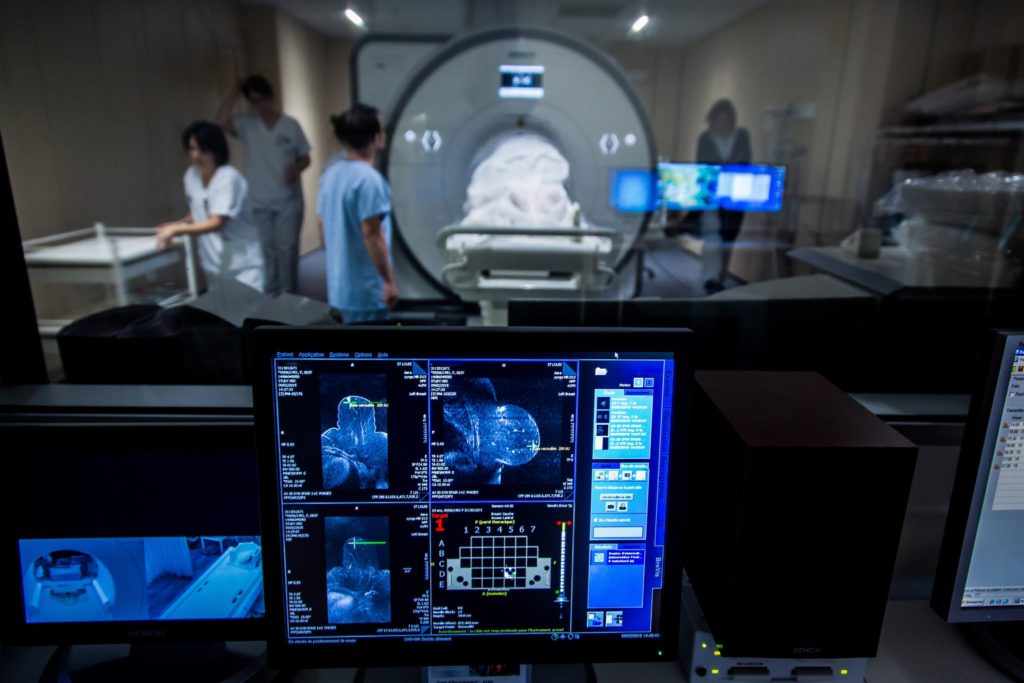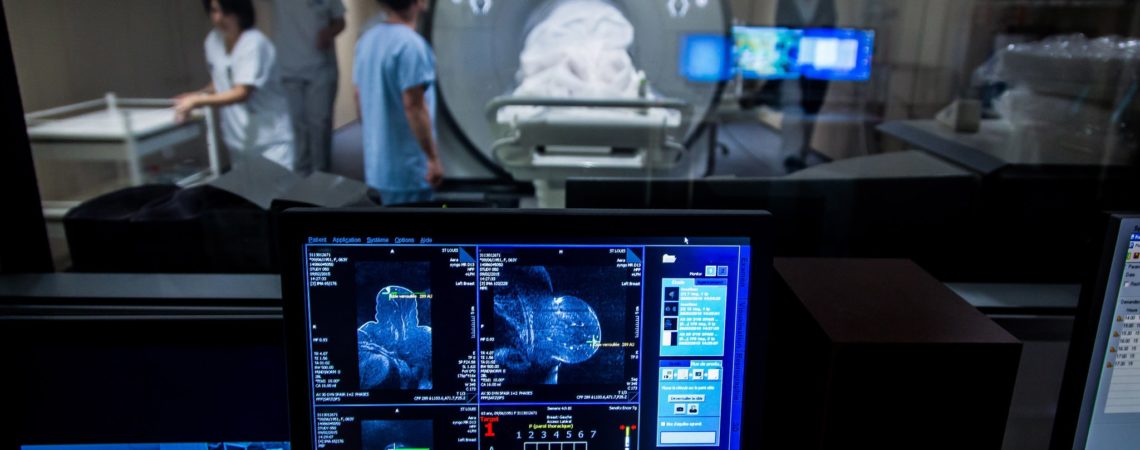From the New York Times
November 27, 2019
By Roni Caryn Rabin
A large study found that M.R.I.s detected tumors missed by mammograms, cutting interval cancers by half or more.

Source: Philippe Garo/Science Source
Many women who have mammograms get normal results that come with a caveat: They are told they have dense breast tissue, which can make their scans harder to read and could leave cancer undetected.
Sometimes those patients are advised to follow up by getting ultrasounds or magnetic resonance imaging (M.R.I.) scans, but for many, it is unclear what their next step should be.
Now, a new study provides strong evidence that supplemental M.R.I.s are more effective in finding tumors in these women than mammograms alone.
The study, of more than 40,000 women with extremely dense breasts in the Netherlands, found that those who had mammograms followed by M.R.I.s, had more tumors detected than with mammography alone. The research also found that those who had M.R.I.s were less likely to find a palpable cancerous lump in between routine screenings; by the time tumors are big enough to be felt, they tend to be more advanced.
The study, the first large randomized controlled trial of supplemental M.R.I.s in women with dense breasts, was published in the New England Journal of Medicine on Wednesday.
Just under half of women over the age of 40 have dense breasts, which means their breasts have more connective and fibrous tissue than usual, and relatively less fat. Women with dense breast tissue have a higher risk of developing breast cancer than women with more fatty breast tissue.
Dr. Wendie Berg, a professor of radiology at University of Pittsburgh School of Medicine and chief scientific advisory for DenseBreast-info.org, said the study’s finding were “very important.”
“The standard practice of mammography alone is not adequate for women with extremely dense breasts,” Dr. Berg said, adding that her own cancer was detected early enough to require minimal treatment because her family history led her to seek an M.R.I.
“Women should be advocating for increased access to screening M.R.I.,” she said.
But though the study results were significant, it is still unclear whether supplementing mammograms with M.R.I.s ultimately reduces breast cancer deaths.
“The ultimate test of the value of M.R.I. screening” in these women will be “whether it improves survival — an answer that we will not have for a very long time,” cautioned Dr. Dan L. Longo, a deputy editor of the New England Journal and professor of medicine at Harvard Medical School, in an editorial accompanying the study.
For all the promise, there is also a downside to using M.R.I.s for breast cancer screening: They yield many false positive results that lead to unnecessary biopsies, and they can detect very early stage tumors that might never become life-threatening, said Carla van Gils, senior author of the study and a professor of clinical epidemiology at University Medical Center Utrecht.
Nevertheless, Dr. van Gils said, the significant reduction in interval cancers — cancers that are diagnosed after a negative mammogram — suggests supplementary M.R.I.s may be a lifesaving tool for women with dense breasts.
“It’s not the same as mortality, but it’s the first step. It’s a prerequisite,” she said, adding that the study is ongoing, and mathematical models will be run to make further predictions about mortality and overdiagnosis. “There are more questions that need to be answered.”
Only about 10 percent of women have extremely dense tissue like the women in the Dutch study. But having dense breast tissue generally makes it harder to see tumors on a mammogram because both the dense tissue and the tumors show up white on an X-ray. Fat, on the other hand, shows up black, so tumors are easily seen.
The Dutch study, called DENSE (Dense Tissue and Early Breast Neoplasm Screening), is a multi-center, randomized controlled trial of 40,373 women between the ages of 50 and 75 in the Netherlands, all of whom have extremely dense breast tissue and had a normal screening mammogram. Scientists randomly invited 8,061 of the women to undergo a supplemental M.R.I., while the remaining 32,312 had only the mammography.
Though only 59 percent of the women invited to have an M.R.I. accepted the offer and had the additional screening, 16.5 additional cancers were detected for every 1,000 women who had an M.R.I.
That in itself was not surprising and had been demonstrated by earlier studies. The researchers were more interested in another question: Did the supplemental M.R.I. screening catch so-called interval cancers that would become symptomatic before the next routine screening, two years hence?
Their analysis found that it did. Among the women in the study who had an M.R.I., the rate of interval cancer detection was 0.8 interval cancers per 1000, far less than the rate of interval cancers in the mammography-only group, which was five per 1000.
Many states now require that women having mammograms be informed that their breast tissue is dense when they get the results, and the Food and Drug Administration is developing similar guidelines. But there is little to no guidance on what women given the information should do about it. The American College of Obstetricians and Gynecologists does not recommend routine use of additional tests after mammography in women who do not have symptoms or other risk factors, though many patients are referred for a supplemental scan.
“The takeaway is that there is no one perfect screening test, and each patient’s perspective on the best course of treatment needs to be considered,” said Dr. Marisa Weiss, founder of breastcancer.org, an educational resource for patients.





